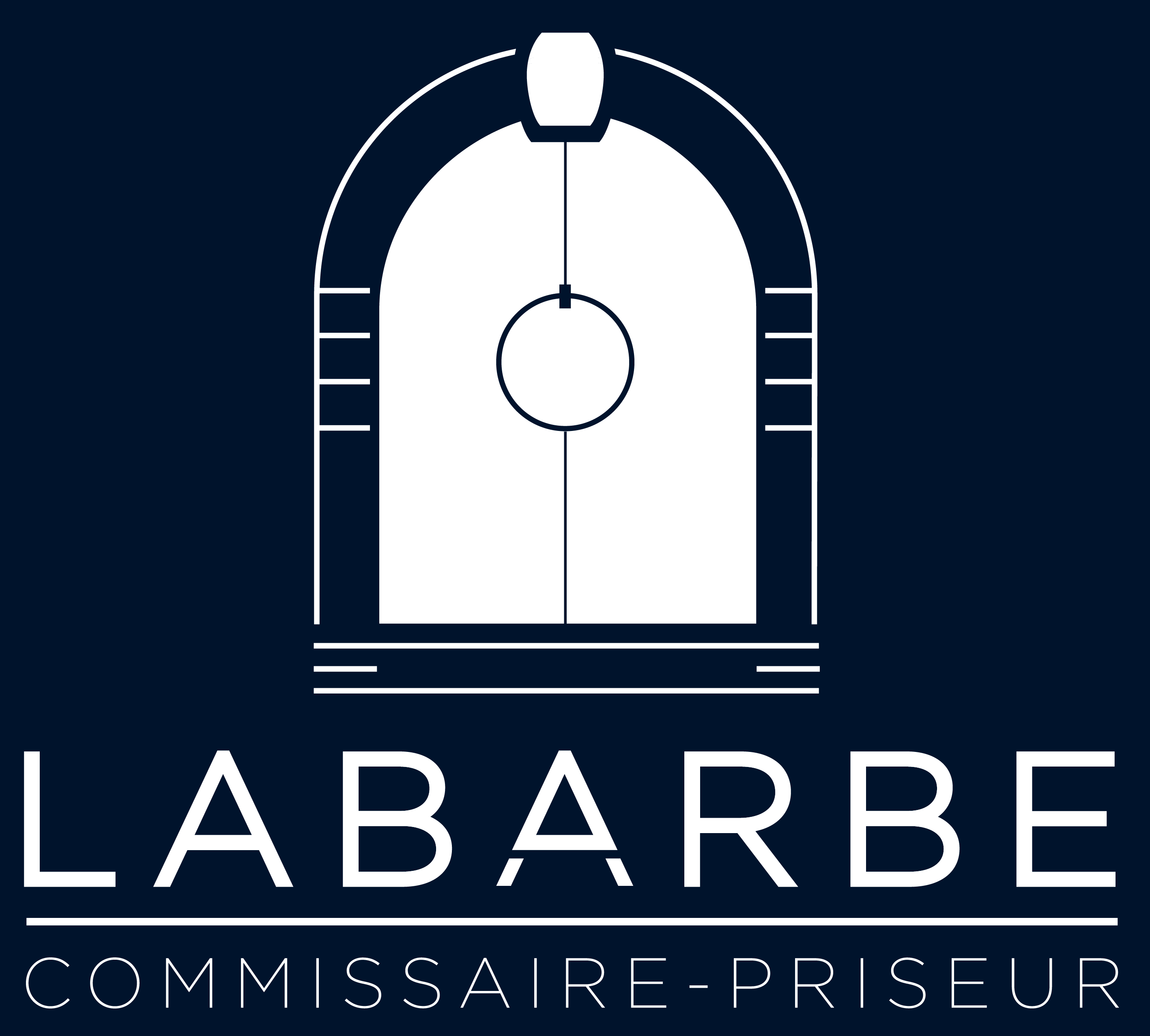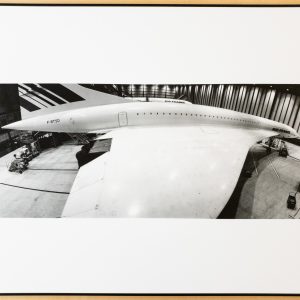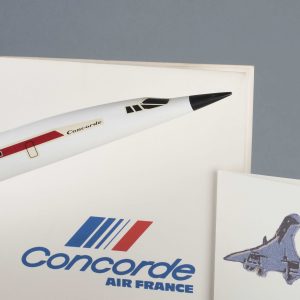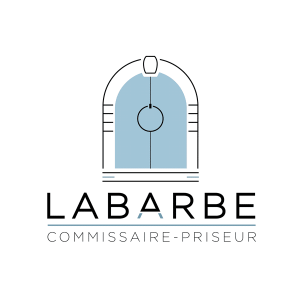CONCORDE AUCTION
OPENING OF THE EXHIBITION OF PIECES
A thousand pieces belonging to Concorde are presented this month - from Saturday 8 to Thursday 27 September - in Toulouse, as part of the exceptional auction that will take place at the end of September in the city that saw the birth of the first supersonic aircraft commercial.
This exhibition of pieces at the Hôtel des Ventes Saint-Aubin is free and open to the public.
Visitors will be able to discover the majority of Concorde pieces put up for sale: on-board instruments (anemometer, flight horizon), commercial fittings (plate/cutlery set, pilot's helmet), structural design pieces, as well as photographs and models signed by the crew of the first flight.
An exhibition of photographs Concorde (artist: Benoît Rajau) not included in the sale will enhance the discovery of the prizes.
The auction will take place at the Halle aux Grains in Toulouse on September 28, 29, 30 and October 1. Many collectors, enthusiasts and curious people, from France and abroad, are expected for this exceptional event. People wishing to acquire a souvenir of the "beautiful white bird" will be able to participate in 3 ways:
- by directly assisting the sale
- by placing purchase orders (forms available in the catalogue or on the website www.concorde-encheres.com),
- by bidding by telephone. To do this, register in advance with the auctioneer, at the latest 48 hours before the start of the sale: 05 61 23 58 78.
The four days of sales will be punctuated by two highlights: Saturday, September 29 in the evening and Sunday, September 30 in the afternoon, when the major lots will be offered (machometer, landing gear). On September 29, an official reception on the theme of the Concorde years will welcome personalities from the institutional, industrial, financial and cultural worlds and will be an opportunity to pay tribute to all the players in this event. Big names who have carried the image of Concorde, including test pilot André Turcat, aeronautical engineers, designers and renowned chefs of French cuisine, are expected at this evening.
Several personalities (Prince Henrik of Denmark, Jacques Chirac, etc.) also signed copies of the catalogue during the summer, which will also be put up for sale, and judging by the high traffic on websites relating to the Concorde sale (www.concorde-encheres.com, www.interencheres.com), it is clear that this legendary aircraft still arouses great interest...
Useful information :
- Catalog: 15 € (sale: Paris airports, Toulouse bookstores, Internet)
- Website: www.concorde-encheres.com
- Exhibition of pieces: from September 8 to 27, 2007 (9 a.m. to 12 p.m. and 2 p.m. to 6 p.m. Monday to Friday, 3 p.m. to 7 p.m. Saturday and 10 a.m. to 12:30 p.m. and 3 p.m. to 7 p.m. Sunday), at the Hôtel des Ventes Saint-Aubin, 3 boulevard Michelet – Toulouse – Free entry.
- Auction sale: 28, 29, 30 September and 1 October 2007 - Halle aux Grains / Toulouse
MAIN CHARACTERISTICS OF THE CONCORDE
First supersonic civilian aircraft
Concorde is the first and only supersonic civil transport aircraft. In supersonic cruise, this exceptional aircraft travels at Mach 2, twice the speed of sound!
A "neo-Gothic" delta wing
Concorde is equipped with a wing whose shape is an evolution of the delta wing. This wing is called "neo-gothic".
A rocking nose
The ingenious tilting nose system allows pilots better visibility during approach, takeoff and landing. This originality ensures better adaptation to the different phases of flight.
Olympus 593 engines
Concorde is equipped with four Olympus 593 engines, jointly designed by Rolls Royce and SNECMA. These engines develop 70 tons of thrust.
CONCORDE: IDENTITY CARD
DIMENSIONS / CONTENANCE
Wingspan: 25,56 m
Length: 62, 1 O m
Height: 12, 20 m
Sail area: 328, 25 m2
Empty weight: 81 t
Fuel tank capacity: 119,000 liters
Maximum take-off weight: 185 t
CAPACITY
Air France / British Airways version: 100 passengers
SPEED
Cruising speed: Mach 2.02 (2,179 km / h)
Maximum speed: Mach 2.23 (2,405 km / h)
PERFORMANCE
Operational altitude: 18,300 m
Walking distance: 6,250 km (100 passengers)
PROPULSION
4 Rolls Royce -SNECMA Olympus 593 reactors
CHRONOLOGY OF THE CONCORDE PROGRAM
At the origin of the program
The idea of designing a supersonic aircraft first appeared in Rome in 1935. In 1947, the sound barrier was broken for the first time in the United States by Chuck Yeager aboard the Bell X-1. From the 1950s onwards, the United States and Europe were conducting parallel studies on a supersonic transport aircraft.
At the end of the fifties, French and British confront their work. The first ones (Sud Aviation) are working on a "Super Caravelle" project; the latter (the future British Aircraft Corporation) are designing the BAC 223, two fairly comparable projects.
In 1961, the design offices of Sud Aviation and British Aircraft Corporation came together. An intergovernmental agreement was signed in London on November 29, 1962. It established the principle of equal sharing between the two countries: each country had its own assembly line, built its own prototype, and took turns directing the technical division. They also shared the financing of the program, development work and production.
In 1967, after four years of heated discussions, it was decided that the supersonic aircraft would be called "Concorde", the final "e" referring to "Excellence", "England", "Europe" and "Entente".
The progress of the program
Alongside the American (Boeing 2707) and Soviet (Tupolev 144) projects, the development of Concorde continued from 1965 to 1976. On March 2, 1969, it was the first flight (duration: 29 minutes); André Turcat was at the controls. A month later, the British prototype took off. Then came the demonstration tours around the world.
But the problems continued (successive delays of the program, ban on overflights of the United States). From 1973 to 1975, two dark years. Out of 74 purchase options, only 16 were confirmed by Air France and British Airways. Commercial operation began with the opening of lines to Dakar, Rio de Janeiro, Caracas, Bahrain and New York, after many twists and turns. Commercial operation proved to be unprofitable. Air France and British Airways then developed special flights, "charter flights" and "world tours".
Concorde's last flight took place at the end of 2003. The imprint of the "beautiful white bird" remains forever that of a remarkable human and technological achievement, having paved the way for future achievements in the European aeronautics industry.
Supersonic of the future
Aircraft manufacturers are involved in several research and monitoring programs in the supersonic field. But the evolution of air transport modes leads us to believe that the future use of a new supersonic, or even hypersonic, aircraft should only be possible on condition of flying from East to West.
KEY DATES OF THE CONCORD PROGRAM
- 29/11/1962 : Franco-British signature for the design and manufacture of a supersonic civil aircraft
- 02/05/1963 : First chips of the French prototype
- 01/10/1965 : Beginning of the assembly
- 11/12/1967 : "Concorde" with an "e": official name of the supersonic future
- 02/03/1969 : First flight of the French prototype F-WTSS - duration: 29 minutes
- 09/04/1969 : First flight of the British prototype G-BSST
- 01/10/1969 : Concorde 001 crosses the wall of sound, MACH 1
- 04/11/1970 : Concorde 001 passes MACH 2
- 09/10/1975 : Issuance of the French Certificate of Airworthiness, followed by the British Certificate
- 21/01/1976 : First entry into service: Air France's Paris-Dakar-Rio and British Airways' London-Bahrain routes
- 22/11/1977 : Inauguration of the first regular service on New York
- 08/11/1986 : 16-day first round of the world tour of British Airways
- 12/10/1992 : Air France Concorde breaks round-the-world speed record: 33 hours and 27 minutes
- 31/05/2003 : Last commercial flight of Concorde under the colors of Air France
- 27/06/2003 : Last flight of the Concorde "Fox Charlie" -Paris CDG / Toulouse
- 24/10/2003 : Last commercial flight of Concorde under the colors of British Airways
Aéroscopia
AERONAUTICAL DISCOVERY COURSE
Aéroscopia is the ambitious project to establish an aeronautical discovery park, supported by Greater Toulouse, near Toulouse-Blagnac international airport and the Airbus A380 assembly site.
Aéroscopia, which will open its doors in 2010, was launched on the initiative of several partners: Association Terre d'Envol (bringing together the Aérothèque, Ailes Anciennes, Cap Avenir Concorde, Virtu'ailes), Greater Toulouse and Airbus.
Beyond the creation of a museographic space, the designers have resolutely oriented their project towards the future by affirming their desire to transmit knowledge of technological know-how and industrial excellence to younger generations, to share the passion for the aeronautical adventure of the 20th century and to arouse interest and vocations for research, science and the technologies of the future.
The tour circuit integrates all of these objectives, offering a coherent approach between discovery-leisure and teaching-pedagogy.
A 7,000 m2 exhibition hall will host legendary aircraft such as the Concorde, Caravelle, Super Guppy, one of the first Airbus A300s and many other legendary aircraft.
This presentation will be completed by the outdoor exhibition of other aircraft that have marked their era. Flight simulators, including a unique example of a Concorde simulator, will be presented in working order. A collection of 1/25 scale models will trace the aeronautical lineage of France, particularly in the South of France. Rare pieces will complete all of these collections: reactor masts, aircraft engines, equipment.
Aéroscopia will also host temporary exhibitions and will complement the industrial tourism activity of Airbus Visit (150,000 visitors per year).
THE AEROTHEQUE,
CONSERVATORY OF THE HISTORIC HERITAGE OF DEWOITINE AT AIRBUS
His history
In 1988, it was decided to create a conservatory of the cultural, social and technological heritage of Aérospatiale Toulouse, called "Aérothèque". Born from the shared desire of the management of the Aérospatiale Toulouse Establishment, active and retired employees, the Aérothèque association revives the Toulouse aeronautical epic that constitutes the culture and identity of the company.
Within this association, men and women from Aérospatiale, active or retired, found themselves with the same passion, in search of a past of traditions whose witnesses are becoming rare. To achieve this goal, it was a question of gathering, processing and exhibiting what constitutes the memory of the "Aérospatiale" factories in Toulouse (today Airbus France), from 1920 - the date of the creation of the Dewoitine workshops - to the present day.
Aérothèque is a living and evolving museum, which expands its collection at the same time as Airbus designs, produces and flies new aircraft in Toulouse.
Her goals
As a major aeronautical hub, Toulouse had to present to the public the history of its main industry since the beginning of the 20th century. This has been done with the Aérothèque, which traces the history of aeronautics from 1922 to the present day, through the history of aircraft and the professions linked to the profession.
Aérothèque brings back to life the work and passion of all the men who participated in the development of the company in the Toulouse area.
The constituent assembly of the Aerotheque defined the main goals of its action, namely:
- to prevent all those who made hundreds of aircraft possible from falling into oblivion;
- to create an archive fund;
- value past and present historical capital;
- create a showcase for the general public.
Today, the large quantity of objects and documents included in the inventory are all testimonies to the great adventure that is the conquest of the 3rd dimension with the fabulous adventure that led to Airbus.
Technical objects and models make it possible to assess the extent of the progress made, from the projects of the pioneer Émile Dewoitine to the most recent developments such as the Airbus A380...
Contacts / Visits
Aeroport -18, rue Montmorency-31200 Toulouse
Tel: 05 61 93 93 57
E-mail: aerotheque@wanadoo.fr
Website: www.aerotheque.f
Add your title text hereSALE CONCORDE OF 2007 IN GAZETTE DROUOT № 36




